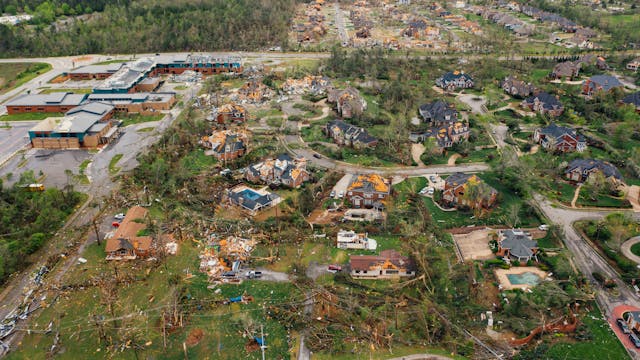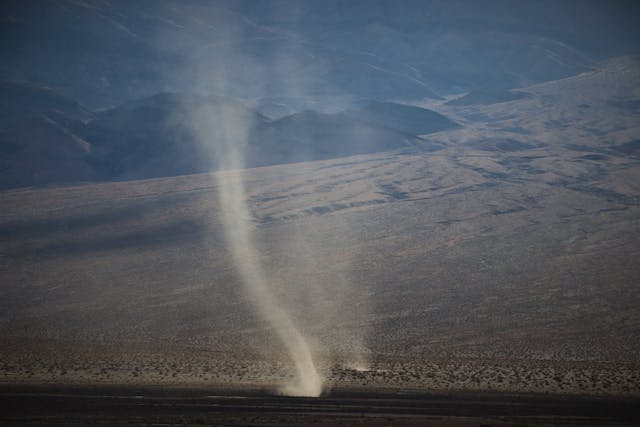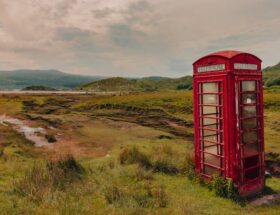Today on GertieBlu, we’re exploring one of nature’s most awe-inspiring and destructive phenomena: tornadoes. These powerful storms can leave a trail of devastation in their wake, but they’re also a fascinating example of the raw power of our planet’s weather systems. Let’s explore what tornadoes are, where and when they most commonly occur, and what you can do to stay safe if one is headed your way.
What is a Tornado?
A tornado is a rapidly rotating column of air that extends from a thunderstorm to the ground. It’s characterized by its funnel-shaped appearance, which is created as the storm pulls up warm, moist air from the ground and mixes it with cooler, drier air from the atmosphere. This combination can create a violent, spinning vortex that can reach wind speeds of over 300 miles per hour (480 km/h) in the most severe cases.
Tornadoes are incredibly destructive because of their intense winds and the debris they carry. They can rip through homes, uproot trees, and toss vehicles like toys. The strength of a tornado is measured using the Enhanced Fujita (EF) Scale, which ranks tornadoes from EF0 (weakest) to EF5 (strongest) based on the damage they cause.
Where Do Tornadoes Occur?
Tornadoes can happen almost anywhere in the world, but they’re most common in certain regions where specific atmospheric conditions are more likely to occur.
1. Tornado Alley, USA:
- Location: The central United States, particularly in parts of Texas, Oklahoma, Kansas, Nebraska, and South Dakota.
- Why Here? Tornado Alley is famous for its frequent tornadoes, especially in the spring and early summer. This region is a hotspot because it’s where cold, dry air from the Rockies and Canada meets warm, moist air from the Gulf of Mexico. When these air masses collide, they create the perfect conditions for tornadoes to form.
2. Dixie Alley, USA:
- Location: The southeastern United States, including parts of Mississippi, Alabama, Louisiana, and Tennessee.
- Why Here? Dixie Alley experiences tornadoes throughout the year, but they’re especially common in the late fall and early spring. The warm, humid air from the Gulf of Mexico meets cooler air from the north, creating the ideal environment for tornadoes.
3. The Great Plains of Canada:
- Location: Southern Alberta, Saskatchewan, and Manitoba.
- Why Here? Similar to Tornado Alley, the Great Plains of Canada are prone to tornadoes, especially in the summer months when warm air from the United States mixes with cooler Canadian air.
4. Northern Europe:
- Location: The United Kingdom, Germany, and parts of France and the Netherlands.
- Why Here? While less frequent than in North America, tornadoes do occur in Europe, typically in late spring and summer. They’re usually weaker, but can still cause significant damage.
5. Australia:
- Location: The eastern coast and parts of the outback.
- Why Here? Tornadoes in Australia are most common in the spring and summer, particularly in Queensland and New South Wales, where tropical air masses interact with cooler air.

When Do Tornadoes Occur?
Tornadoes can happen at any time of year, but they’re most common during specific seasons in different regions.
1. Spring (March to May):
- This is peak tornado season in the United States, particularly in Tornado Alley. The mix of warm and cold air masses during this time creates ideal conditions for tornado formation.
2. Summer (June to August):
- Tornadoes are still common in the U.S. and Canada, though they often shift slightly northward as warmer air moves farther north. Europe also sees its peak tornado activity during this time.
3. Fall (September to November):
- Dixie Alley experiences a secondary tornado season in the fall. Cooler air begins to move southward, clashing with lingering warm air from the summer.
4. Winter (December to February):
- While tornadoes are less common in winter, they can still occur, particularly in the southeastern United States and in areas that experience unusual warm spells during the colder months.
Staying Safe During a Tornado
Knowing when and where tornadoes are likely to occur is important, but it’s also crucial to know what to do if a tornado is headed your way.
1. Pay Attention to Weather Alerts:
- Stay informed by monitoring local weather forecasts and signing up for alerts from a trusted source.
2. Seek Shelter Immediately:
- If a tornado warning is issued, take cover immediately. The safest place is a basement or a small, windowless room on the lowest floor of your home. If you’re outside, find the nearest sturdy building or lie flat in a ditch, covering your head.
3. Keep Emergency Supplies Ready:
- Have a tornado emergency kit prepared, including water, non-perishable food, a flashlight, batteries, a first aid kit, and a weather radio.
4. Stay Informed:
- After the tornado passes, continue to monitor the weather for any additional storms and listen for official updates before venturing out.

Final Thoughts
Tornadoes are a reminder of nature’s incredible power. While they can be terrifying, understanding where and when they occur, and knowing how to stay safe, can help you be prepared. Whether you’re in Tornado Alley, Dixie Alley, or somewhere else in the world, being informed is the first step to protecting yourself and your loved ones from these incredible storms.
Thanks for visiting GertieBlu! Stay safe, stay informed, and keep exploring the wonders of our world with us.









